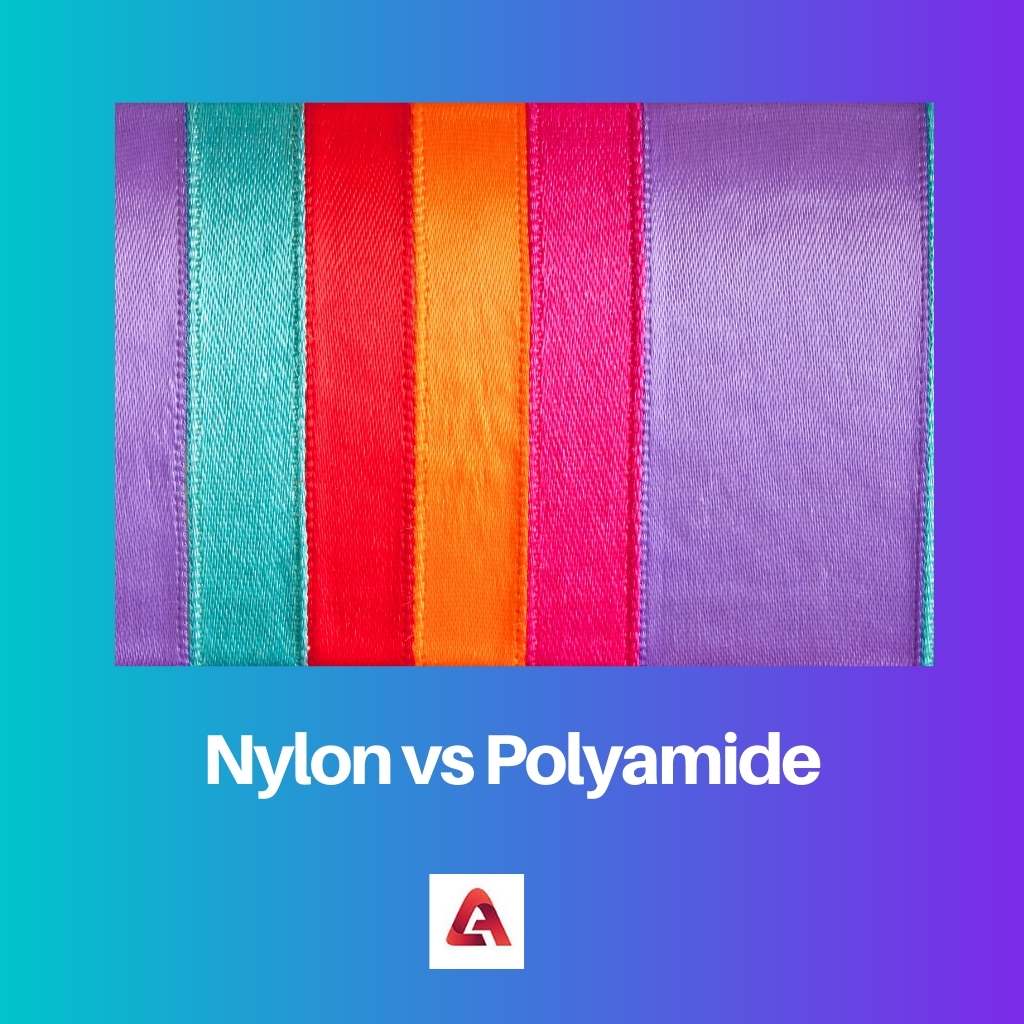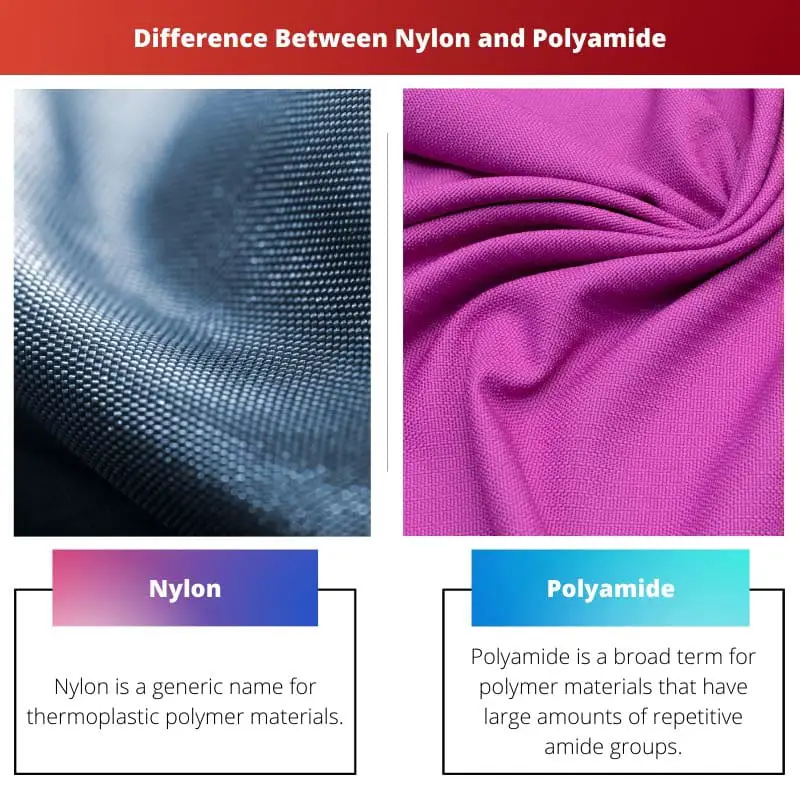Nylon and Polyamide are synthetic materials that are widely used across the world. Both are closely related to each other.
Therefore, it can be difficult to tell them apart. However, knowing the key differences that they have may help while choosing the right material for making a new item.
Key Takeaways
- Nylon is a synthetic polymer in many products, including clothing and carpeting.
- Polyamide is a general term for synthetic polymers, including nylon and other materials.
- While nylon is a specific type of polyamide, not all polyamides are nylon.
Nylon vs Polyamide
Nylon is a combination of polymers made of polyamides, which can only be made synthetically, and they are used for everyday activities. Polyamide is a wide term that touches numerous materials, including nylon, it can either be made through synthetic or natural processes, but they’re not durable.

Nylon is the generic term used for several materials. Generally, it has a silk-like texture.
Most of the time, it is used by putting petroleum under a melting process. This results in the creation of films, fibres, or shapes.
The obtained material can then be mixed with various additives that give them different properties. Polyamides are any polymer material that has a considerably large amount of amide.
These are thermoplastic in nature means that they are resistant to solvents, have hood heat ageing and can withstand high temperatures easily. There are various materials that fall under this category.
But nylon is the most popular.
Comparison Table
| Parameters of Comparison | Nylon | Polyamide |
|---|---|---|
| Meaning | Nylon is a generic name for thermoplastic polymer materials. | Polyamide is a broad term for polymer materials that have large amounts of repetitive amide groups. |
| Nature | Nylon can only be synthetic in nature. | Polyamide can either be synthetic or natural. |
| Relation | Nylon is a kind of polyamide. | Polyamide covers various materials, including nylon. |
| Durability | Nylon is very durable and slightly hydrophilic. | Polyamides are not as durable and are slightly hydrophobic. |
| Chemical Anatomy | Nylon has high symmetry and polarity. | The amide structures of different materials in the category decide their symmetry and polarity. |
What is Nylon?
A research project that began in 1927 by DuPont worked on synthesizing polymer materials. In 1927, the first commercial thermoplastic polymer was successfully created by using diamines.
This newly formed material was called Nylon. It began to be used widely for manufacturing toothbrush bristles and was later used for military parachutes as well.
Now, nylon is a generic name for any group of synthetic polymers that are made from polyamides. Due to their silk-like texture, people use them widely in the production of fabric and fibres.
These can be made into clothing, flooring and even rubber reinforcements. They are used for food packaging, electrical equipment, and moulded car parts.
The material became popular because it exhibited a variety of characteristics that other materials did not possess. Some of these include its soft texture, high melting point, and durability.
Significant elongation, compact chemical structure, sunlight resistance and abrasion resistance. Moreover, the material can be heat-set into pleats and creases pretty easily.
Nylon is essentially a kind of plastic that can be recycled. It has the same carbon footprint as wool but is far more durable. There, the overall footprint is lesser due to its longer shelf life.

What is Polyamide?
Polyamide is a broad term that includes several materials under it. Any material that is formed when molecules of a monomer are linked together by amide groups falls under this category.
The mixtures of monomers can be made in several varieties and combinations, resulting in different materials forming. The most popular one among these is nylon.
These materials can either be synthesized or occur naturally. Synthetic polyamides include sodium poly, aramids, polyethene, epoxy, polyester, Teflon etc.
These are widely used to make carpets, textiles, kitchen utensils, sportswear and even car parts. Naturally occurring polyamides include wool and silk. These are widely used to make fabric.
Characteristics of polyamides include high tensile strength, lightweight, and high flame resistance. Heat resistance, excellent dimensional stability, and even solvent resistance.
These make them a good option for commercial use as compared to other materials. However, the material is criticized because of its adverse effects on the environment and human health.
During its production, a significant amount of nitrous oxide is released into the atmosphere, which further leads to ozone depletion. Moreover, dust and fumes in polyamide factories irritate the eyes.
Nose, throat, and skin of workers. A large amount of the material is not recycled and is just dumped in landfills by several companies.

Main Differences Between Nylon and Polyamide
- Nylon is a generic name for thermoplastic polymer materials, whereas polyamide is a broad term for polymer materials that have large amounts of repetitive amide groups.
- Nylon can only be synthetic in nature whereas polyamide can either be synthetic or naturally occurring.
- Nylon is a kind of polyamide, whereas polyamide covers various materials, including nylon.
- Nylon is very durable and slightly hydrophilic, whereas polyamide is not as durable and are slightly hydrophobic.
- Nylon has high symmetry and polarity, whereas the amide structures of different materials in the category decide their symmetry and polarity.




